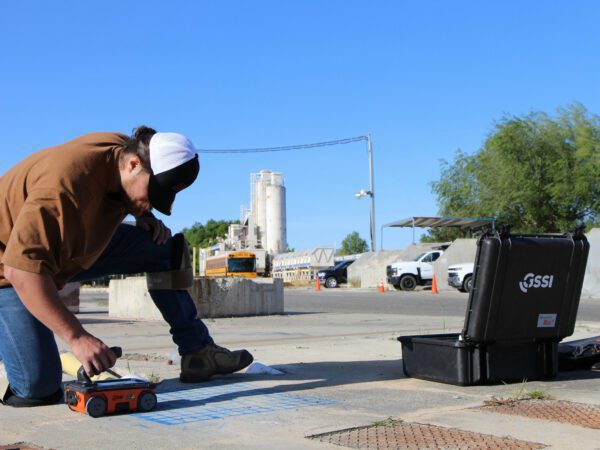Introduce the Transformative Power of Concrete Scanning in Taking Full Advantage Of Effectiveness and Security
Concrete scanning has actually arised as an important tool in the construction industry, supplying unparalleled advantages in enhancing job performance and guaranteeing security criteria. The transformative power of concrete scanning exists in its capability to offer detailed understandings and real-time data, revolutionizing exactly how jobs are planned and performed.
Significance of Concrete Scanning
Ensuring the architectural integrity and safety of building and construction jobs begins with the vital action of carrying out complete concrete scanning. Concrete scanning is a non-destructive method utilized to detect and map subsurface aspects within concrete frameworks.
The significance of concrete scanning can not be overemphasized, as it plays a vital duty in preventing mishaps, lessening job delays, and making certain the long-term resilience of the building and construction. By determining possible dangers prior to the construction stage starts, home builders can carry out proper safety actions and make informed choices relating to the style and implementation of the project. Furthermore, concrete scanning aids in optimizing task timelines and budget by preventing unforeseen expenses and delays that may develop because of unexpected blockages within the concrete. Eventually, buying complete concrete scanning is a proactive approach that improves both effectiveness and safety and security in building projects.
Just How Concrete Scanning Functions
Concrete scanning runs as an essential tool in construction tasks by employing sophisticated technologies to spot and map subsurface components without triggering structural damages. Ground Penetrating Radar (GPR) and Electromagnetic Induction (EMI) are two key approaches made use of in concrete scanning. GPR jobs by emitting high-frequency radar pulses into the surface, which get better when they encounter subsurface things or voids. The moment considered the signal to return suggests the deepness and place of the items. EMI, on the other hand, makes use of electromagnetic fields to determine variations in product structures, such as determining rebar or channels within concrete frameworks.
Throughout the scanning procedure, the data accumulated is examined in real-time, permitting immediate recognition of potential threats or barriers below the surface area. This details aids in decision-making, making sure that building activities proceed securely and effectively. In addition, 3D imaging software can be used to create topographic maps of the subsurface aspects, even more improving task preparation and implementation. By utilizing these advanced modern technologies, concrete scanning dramatically minimizes the danger of costly problems and injuries on building sites.
Benefits of Concrete Scanning
Using sophisticated scanning innovations in construction tasks uses a wide range of benefits, improving both efficiency and security on-site. One of the key benefits of concrete scanning is the capacity to discover and find embedded things such as rebar, post-tension wires, and conduits properly. By recognizing these components prior to boring or reducing right into concrete frameworks, the danger of unintended strikes is significantly minimized, preventing prospective injuries to employees and damage to the structure itself. In addition, concrete scanning aids in preparation and developing more efficiently, as it gives exact information concerning the area and depth of structural elements.

Study: Concrete Scanning Success

In an additional case, a construction company made use of 3D concrete scanning to examine the condition of aging concrete structures in a historic structure. The in-depth scans given important insights into the level of degeneration and aided prioritize maintenance efforts effectively. By proactively resolving locations of concern recognized with scanning, the firm was able to extend the lifespan of the framework and guarantee occupant safety.
These study emphasize the transformative power of concrete scanning in enhancing efficiency, accuracy, and safety in construction jobs.
Carrying Out Concrete Scanning in Projects
Executing sophisticated scanning innovations throughout building and construction jobs has come to be progressively crucial for enhancing accuracy and safety. By integrating concrete scanning into project preparation and implementation, building teams can recognize prospective dangers, such as rebar or post-tension cable televisions, concealed within concrete frameworks. This positive method reduces the risk of mishaps, hold-ups, and expensive rework, inevitably bring about extra effective project timelines and budget plans.
To carry out concrete scanning efficiently, task supervisors ought to collaborate very closely with seasoned scanning specialists to identify the most suitable scanning methods for the details project needs. Involving scanning professionals from the very early stages of a task allows the team to create detailed scanning strategies that attend to key areas of problem and make certain thorough data collection.
In addition, incorporating concrete scanning right into regular task workflows can improve decision-making procedures, as real-time scan information offers instant understandings into the problem of concrete structures - Concrete i was reading this Scanning. This data-driven approach facilitates informed analytical and makes it possible for groups to make modifications promptly, cultivating a culture of efficiency and safety and security throughout the project lifecycle

Final Thought
To conclude, concrete scanning plays a vital function in improving effectiveness and safety and security in construction jobs. By making use of advanced technology to map and discover out underlying frameworks within concrete, this procedure helps to avoid pricey blunders, ensure structural stability, and decrease risks on website. With the capability to uncover concealed elements and offer accurate data, concrete scanning shows to be a useful device for optimizing project results and taking full advantage of total success.
Concrete scanning is a non-destructive technique used to discover and map subsurface aspects within concrete structures. Furthermore, concrete scanning assists in enhancing task timelines and spending plan by avoiding unexpected costs and delays that may develop due to unexpected obstructions within the concrete. One significant case study entails a large-scale improvement task where concrete scanning played a vital function in ensuring project success.In one more instance, a building and construction firm made use of 3D concrete scanning to assess the problem of aging concrete frameworks in a historic structure. By integrating concrete scanning right into task planning and implementation, construction groups can determine prospective risks, such as rebar or post-tension learn the facts here now wires, concealed within concrete frameworks.